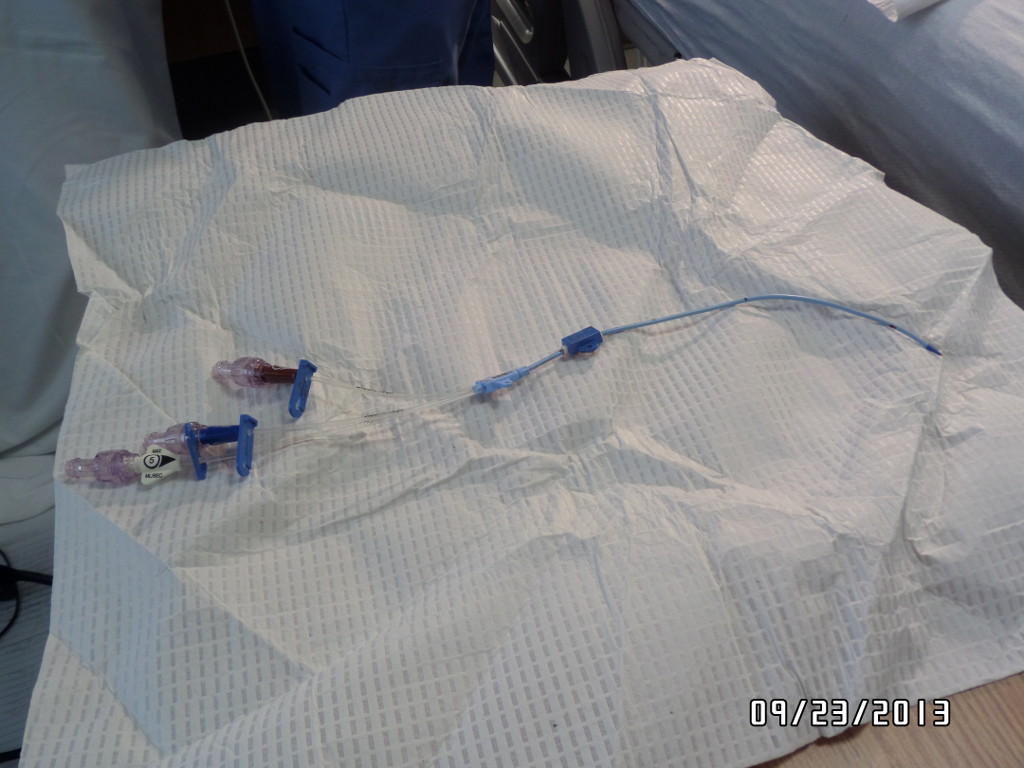Epicardial ablation is the technical term for the surgical procedure I had done at UNC Medical Center on September 19th. (A thoracotomy is just “cutting into the pleural space of the chest”) This was done by Dr Andy Kiser, a professor of surgery at the University and a pioneer of this technique for treating atrial fibrillation. It’s going to take a good while to properly account for everything that happened to me in conjunction with this procedure, but three weeks on I’m in normal sinus rhythm 90% of the time and the trend is definitely in the direction of further improvement. (This sinus rhythm is at least partly due to the antiarrythmic drug Tikosyn currently) Contrasting this state with the “24/7” afib I dealt with before the procedure is difficult, but is best shared by saying I was flabbergasted to realize that the feelings of well being that flooded over me in the minutes after I went into normal rhythm are called “normal” in other people. I’d forgotten what normal felt like, but I like it, and I’m in still in a state of pure celebration of living. The doubts about the future that have dogged me since I approached the age at which my grandfather died of heart ailments (57) has vanished, hopefully for at least thirty years!
The paper linked to below has a detailed description of the procedure written by doctors Kiser and Mounsey and an associate. This paper describes an initial approach to “convergent” treatment combining epicardial and endocardial ablation in a single session: a more recent refinement that applies to me involves a six to eight week gap between the epicardial and endocardial parts that enables the endocardial phase to be more effective. My endocardial procedure is scheduled for November 12th and there’s every reason to believe this will be a piece of cake compared to the surgical procedure. I confess to being very, VERY glad that I avoided reading these and other details before I had the surgery. Doctor Kiser’s 100+ epicardial procedure experience in combination with Doctor Mounsey’s 1300+ endocardial procedure experience allowed me to be confident and comfortable with going ahead with it, albeit mostly in an “ignorance is bliss” state in September. I think my subconscious was smart enough to know that foreknowledge of what was going to happen and what might happen would have only had a down side. Finally, “something” did happen to me such that, like the patient described in this paper, I required a dopamine infusion. I only jealized this was significant earlier today (i.e. I recall mention of dopamine being discontinued sometime after the surgery, but didn’t appreciate what use of that drug implied). I don’t know yet if I needed this for hypotension/bradycardia or for something else or as some kind of prophylactic.
If you’re considering having this procedure done my advice is to stop here, but otherwise, here are the details. WARNING: not for the squeamish.
OK, if you gotten this far you aren’t too squeamish, but here’s a bigger challenge.
This is a “central line”, the rightmost few inches of which sit inside the heart, allowing injection of drugs with fastest possible effect. This is the central line that was inside me for four days. By great good fortune, despite multiple nurses and doctors trying to explain the geometric reality of this gadget while I was in the hospital, I didn’t “get it” until a nurse pulled it out of me and I could see it as it is here. Pulling it out didn’t hurt. How on earth did they prevent internal bleeding with nothing more than the very firm pressure the nurse held on my chest for a few minutes? I don’t know, and I don’t want to know!


I already told you, it’s a Peripherally Inserted Central Catheter, or PICC line.